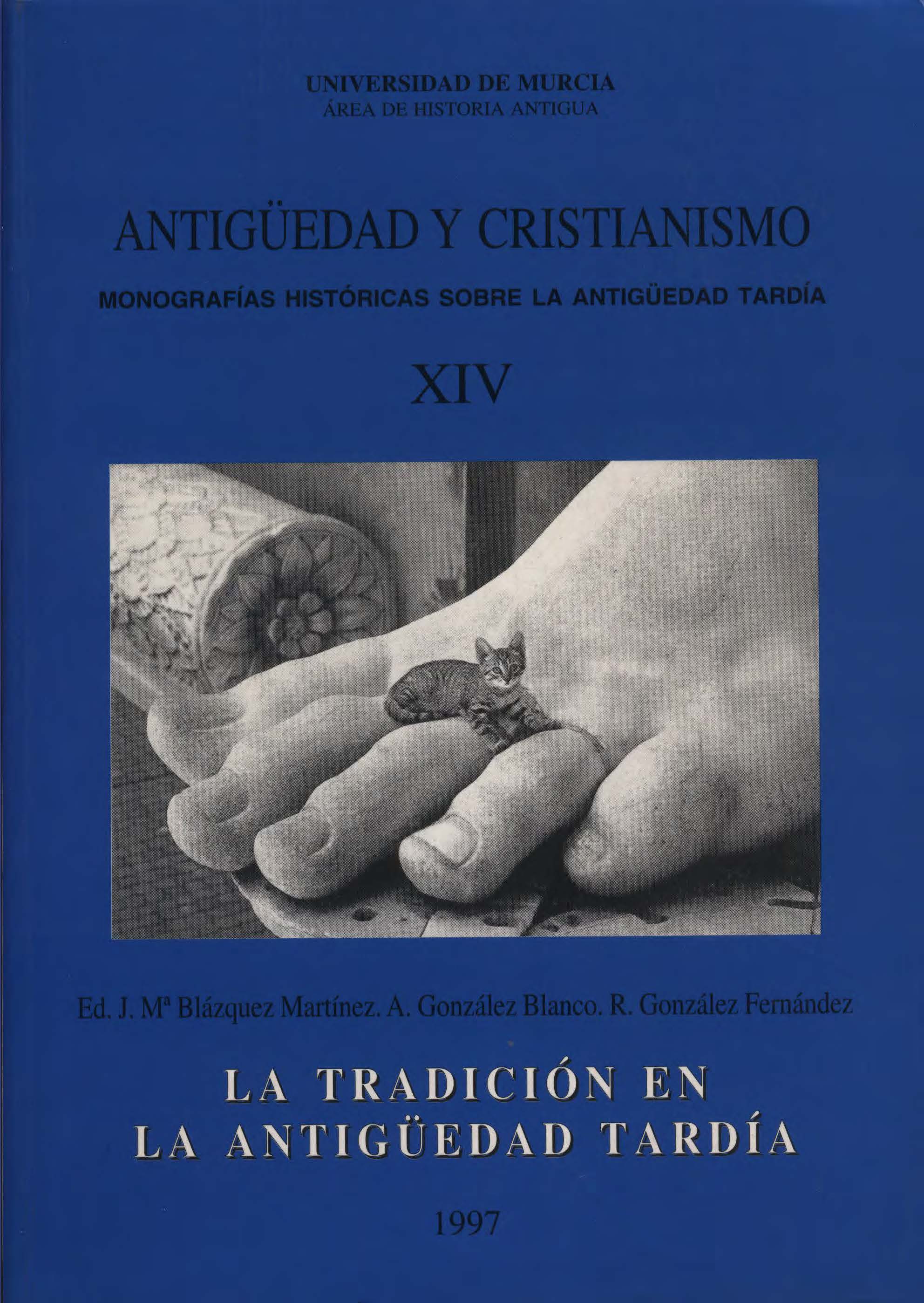TRANSFORMATIONS AND CREATIVITY IN VISIGOTHIC-PERIOD IBERIA
Abstract
There are seventh-century Sasanian and Muslim motifs that can be found in the contemporaneous, seventh-century, art of Iberia. That is, there is evidence of artistic contact between these two regions, the land that was once the Persian empire and that of the Iberian Peninsula. It can be demonstrated that there was an emanation that passed from east to west, that certain distinguishably seventh century forms which were developed in the east subsequently appeared in the art of Iberia during that century.Downloads
-
Abstract254
-
PDF (Español (España))145
References
ALMEIDA, Fernando de: «Arte visigótica em Portugal». O Arqueólogo Portugues 4 (1962): 5-278.
ARAGONESES, Manuel Jorge: «El primer credo epigráfico visigodo y otros restos coetanos, descubiertos en Toledo», Archivo Español de Arte 30 (1957): 295-323.
CATTANEO, Raffaele: Architecture in Ztaly from the Sixth to the Eleventh Century. London: 1896.
CORSO SÁNCHEZ, Ramón: San Pedro de la Nave; Estudio histórico y arqueológico de la iglesia visigoda. Zamora: 1986.
CRESWELL, K.A.C.: Early Muslim Architecture. 2nd ed. Vol. 1 of 2 vols.: Umayyads, A.D. 622-750, pt. 1. Oxford: 1969
CRUZ VILLALÓN, María: Mérida visigoda; La escultura arquitectónica y litúrgica. Badajoz: 1985.
ERDMANN, Kurt: Der Kunst Irans zur Zeit der Sasaniden. Berlin: 119431. Reprinted Mainz: 1969.
GHIRSHMAN, Roman: Iran, Parthians and Sassanians. Trans. Stuart Gilbert and James Em- mons. London: 1962.
GIL, Juan: ««Epigraphica III». Cuadernos de Filogía Clásica 14 (1978): 83-120.
GRABAR, Oleg: Sasanian Silver; Late Antique and Early Medieval Arts of Luxuryfrom Iran. Ann Arbor, 1967.
GUNTER, Ann C. and JETT, Paul: Ancient Iranian Metalwork in the Arthur M. Sackler Gallery and the Freer Gallery of Art. Washington, D. C.: 1992.
HERZFELD, Ernst: Am Tor von Asien. Berlin: 1920.
HOPPE, J.M.: «LYéglise espagnole visigothique de San Pedro de la Nave (El Campillo, Zamora): Un programme iconographique de la fin du VIIe siecle.» Annales d'histoire de l'art et d'archeologie 9 (1987): 59-81.
ILDEFONSVS, Saint: Bishop of Toledo: De Itinere Deserti. In vol. 1 of Santos Padres Españo- les. Ed. and trans. by Julio Campos Ruiz. Madrid: 1971.
LENZEN, Heinrich J.: «Zur relativen Chronologie der sasanidischen Stuckarbeiten.» Archaolo- gischer Anzeiger 1952: cols. 188-221.
MATEOS RODRÍGUEZ, Miguel Ángel and ESTEBAN RAMÍREZ, A.L.: San Pedro de la Nave. Zamora: 1980.
PALOL, Pedro de: «Excavaciones en la necrópolis de San Juan de Baños (Palencia). Excava- ciones Arqueológicas en España 32 (1964): 3-24. - Arte hispánico de la época visigoda. Barcelona: 1968.
POPE, Arthur Upham, ed.: A Suwey of Persian Art. Vol. 4 of 6 vols. London & New York: 1938.
ROSS, Marvin C.: Jewelry, Enamels, and Art of the Migration Period. 2 vols. Washington, D.C.: 1965.
SARRE, Friedrich: Die Kunst des alten Persien. Berlin: 1922.
SCHLUNK, Helmut and HAUSCHILD, Theodor: Die Denkmaler der frühchristlichen und westgotischen Zeit. Mainz: 1978.
SCHLUNK, Helmut: «Arte visigod0.n in Ars hispaniae. Vol. 2 of 22 vols. Madrid: 1947, 225-323. - «Beitrage zur kunstgeschichtlichen Stellung Toledos im 7. Jahrhunderb. Madrider Mitteilungen 11 (1970): 161-186. - «Estudios iconográficos en la iglesia de San Pedro de la Nave». Archivo Español de Arte 43 (1970): 245-267.
TREVER, Camilla: Nouveaux plats sasanides de llErmitage. Moscow & Leningrad: 1937.
VOGÜÉ, [Charles Jean] Melchior: Syria centrale; Architecture civile et religieuse du Ier au VIIe si2cle. Vol. 1 of 2 vols. Paris: 1865.
ZIZICHWILI, Wachtang Dshobadze: «Antecedentes de la decoración visigoda y rarnirense)). Archivo Español de Arte 27 (1954): 129-146.
1. The authors non-exclusively assign the exploitation rights (reproduction, distribution, communication and transformation) to the magazine.
2. The works published in this magazine are subject to the Attribution-ShareAlike 4.0 International license (CC By SA 4.0). Therefore, they can be copied, used, disseminated, transmitted and publicly displayed, provided that:
i) the authorship and the original source of its publication (journal, editorial and URL of the work) are cited, thus allowing its recognition.
ii) it is allowed to remix, transform or create from the material while maintaining the same license as the original.
Note: Articles prior to 2022 incorrectly display the CC by SA license in the abstract page. They are under a CC by NC ND license as embedded in the article pdfs. Articles published in 2022 and after are under the CC by SA license.

3. Self-archiving conditions. Authors are allowed and encouraged to electronically disseminate the pre-print (version before being evaluated) and/or post-print (version evaluated and accepted for publication) versions of their works before publication, as it favors their publication. Earlier circulation and diffusion and with it a possible increase in its citation and reach among the academic community. Color RoMEO: verde.
























